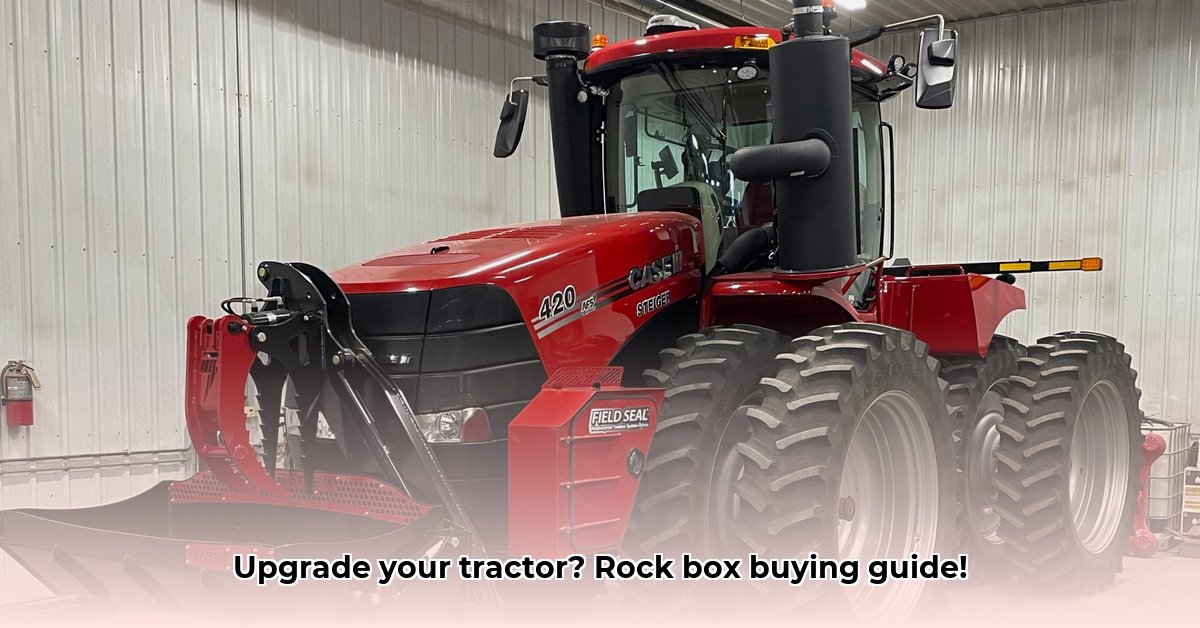
Finding the right tractor weight box—often called a rock box—can significantly impact your farm's efficiency and safety. This comprehensive guide helps you navigate the market's complexities, ensuring you select the optimal weight box for your specific needs. For another helpful guide, check out our article on box blade uses.
Understanding Your Tractor's Needs: Weight, Size, and Soil Type
Before beginning your search, assess your tractor's capabilities and typical workload. Heavier tractors and larger implements necessitate more ballast for improved stability and traction. Soil type also plays a crucial role. Clay soils, prone to compaction, may benefit from lighter weight boxes. Conversely, sandy soils might require heavier weights to maintain grip. Consider these factors when determining the appropriate weight and size for your rock box.
Sizing Up Your Options: Dimensions and Weight Capacity
Weight boxes are available in various sizes, directly impacting their weight capacity. Larger boxes generally hold more ballast. However, ensure compatibility with your tractor's dimensions and lifting capacity. Don't overlook the box's weight itself, which adds to the overall load on your tractor's three-point hitch.
| Weight Box Size (Approximate) | Estimated Weight Capacity (lbs) | Recommended Tractor HP Range | Notes |
|---|---|---|---|
| Small | 500-1000 | 25-45 | Suitable for smaller tractors and lighter implements in less demanding soil conditions. |
| Medium | 1000-2000 | 45-75 | Ideal for medium-sized tractors and various implements; suitable for a range of soil types. |
| Large | 2000-3000+ | 75+ | Best for large tractors and heavy-duty implements. Crucial for rocky or challenging terrains. |
Did you know? Overloading your tractor's three-point hitch can lead to serious damage and safety hazards. Always consult your tractor's owner's manual for weight limits.
Steel Strength: Thickness and Material
Steel gauge directly affects durability. Thicker steel (e.g., 3/8" or 1/2") provides superior strength and longevity, though it comes at a higher cost. Thinner steel (e.g., 3/16" or 1/4") is less expensive but may be more susceptible to dents or bending under heavy loads. The choice depends on your operating conditions and budget. Prioritize high-quality steel; it resists corrosion and extends the lifespan of your investment.
Essential Features: Enhancing Functionality and Safety
Beyond the basics, explore optional features that can enhance functionality and safety. Curved brackets improve weight distribution and stability. Top guards protect the ballast from the elements and reduce the risk of material spillage. Bolt-on arms allow flexible weight adjustments. Internal weight cages enhance containment and restrict material movement.
Choosing a Reliable Supplier: Ensuring Quality and Support
Select your weight box from a reputable supplier. Compare quotes from multiple vendors, paying attention to steel quality, warranty terms, and customer service responsiveness. Thorough specifications, clear images, and readily available answers to your questions are indicative of a reliable supplier.
Installation, Maintenance, and Troubleshooting
Installation usually involves attaching the weight box to your tractor's three-point hitch. Refer to your tractor's manual and the supplier's instructions for detailed guidance. Regular maintenance includes inspecting for loose bolts or damage and applying rust preventative coatings. Promptly address any issues to prevent cascading failures.
Common Issues and Solutions:
- Loose bolts: Tighten promptly to prevent further damage and ensure safe operation.
- Bent brackets: Repair or replace as needed to maintain proper weight distribution and avoid compromising safety.
- Rust: Clean and apply a rust preventative coating to extend the weight box's lifespan and avert premature deterioration.
Choosing the correct weight box is a critical investment. This guide equips you with the knowledge to make an informed decision, optimizing your tractor's performance and ensuring safe operation. Remember, this investment in productivity and safety will pay dividends for years to come.